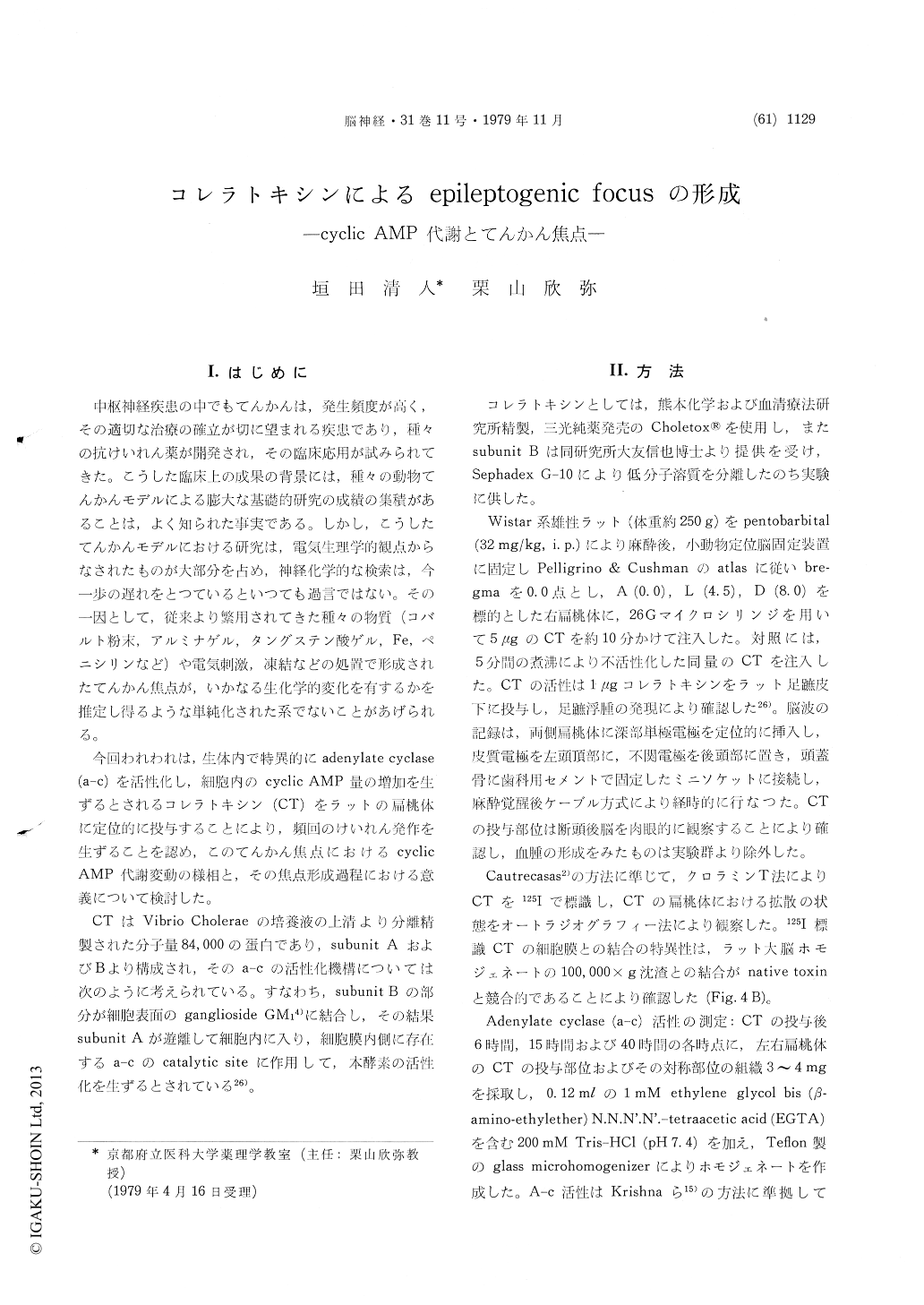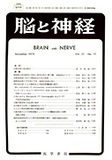Japanese
English
- 有料閲覧
- Abstract 文献概要
- 1ページ目 Look Inside
I.はじめに
中枢神経疾患の中でもてんかんは,発生頻度が高く,その適切な治療の確立が切に望まれる疾患であり,種々の抗けいれん薬が開発され,その臨床応用が試みられてきた。こうした臨床上の成果の背景には,種々の動物てんかんモデルによる膨大な基礎的研究の成績の集積があることは,よく知られた事実である。しかし,こうしたてんかんモデルにおける研究は,電気生理学的観点からなされたものが大部分を占め,神経化学的な検索は,今一歩の遅れをとつているといつても過言ではない。その一因として,従来より繁用されてきた種々の物質(コバルト粉末,アルミナゲル,タングステン酸ゲル,Fe,ペニシリンなど)や電気刺激,凍結などの処置で形成されたてんかん焦点が,いかなる生化学的変化を有するかを推定し得るような単純化された系でないことがあげられる。
今回われわれは,生体内で特異的にadenylate cyclase(a-c)を活性化し,細胞内のcyclic AMP量の増加を生ずるとされるコレラトキシン(CT)をラットの扁桃体に定位的に投与することにより,頻回のけいれん発作を生ずることを認め,このてんかん焦点におけるcyclicAMP代謝変動の様相と,その焦点形成過程における意義について検討した。
Epilepsy-like convulsive seizures have been in-duced by cholera toxin administration into the rat amygdaloid complex. Between the 8th and 48th hr after the administration, rhythmic spike discharges (1-3 spikes/sec) were electroencephalographically observed bilaterally in the amygdaloid complexes, and rats exhibited abnormal behaviors such as running, jumping, tail lifting, rearing, vocalization aggressive behavior, facial twitching and increased salivation. During these stages, high voltage spikes were intermittently observed with generalized con-vulsive seizures. Duration of the seizure was 1-2 min and the incidence was 0-6 times/hr. At 48 hrs after the administration or thereafter, convul-sive seizures disappeared and electroencephalo-graphic abnormalities were gradually normalized. Occasional rhythmic spike discharges, however, were observed more than 168 hrs after the admini-stration.
Since autoradiographic observations with 125I-labeled cholera toxin revealed that the injected toxin does not spread out at all from the injected site, the use of this toxin seems to be an ideal procedure to produce micro-epileptogenic foci. Cyclic AMP content as well as adenylate cyclase activity in the ipsilateral amygdaloid complex was significantly increased during preconvulsive and convulsive states. The administration of 5×10-8 moles of dibutyryl cyclic AMP through the can-nula implanted into the amygdaloid complex also induced behavioral and electroencephalographic abnormalities similar to those found in the cholera toxin-treated animals.
These results suggest that cyclic AMP and/or cyclic AMP dependent neuronal mechanisms may play a significant role in the establishment of epi-leptogenic focus. Possible use of this animal model for the study of anti-epileptic drugs are also sug-gested.

Copyright © 1979, Igaku-Shoin Ltd. All rights reserved.


